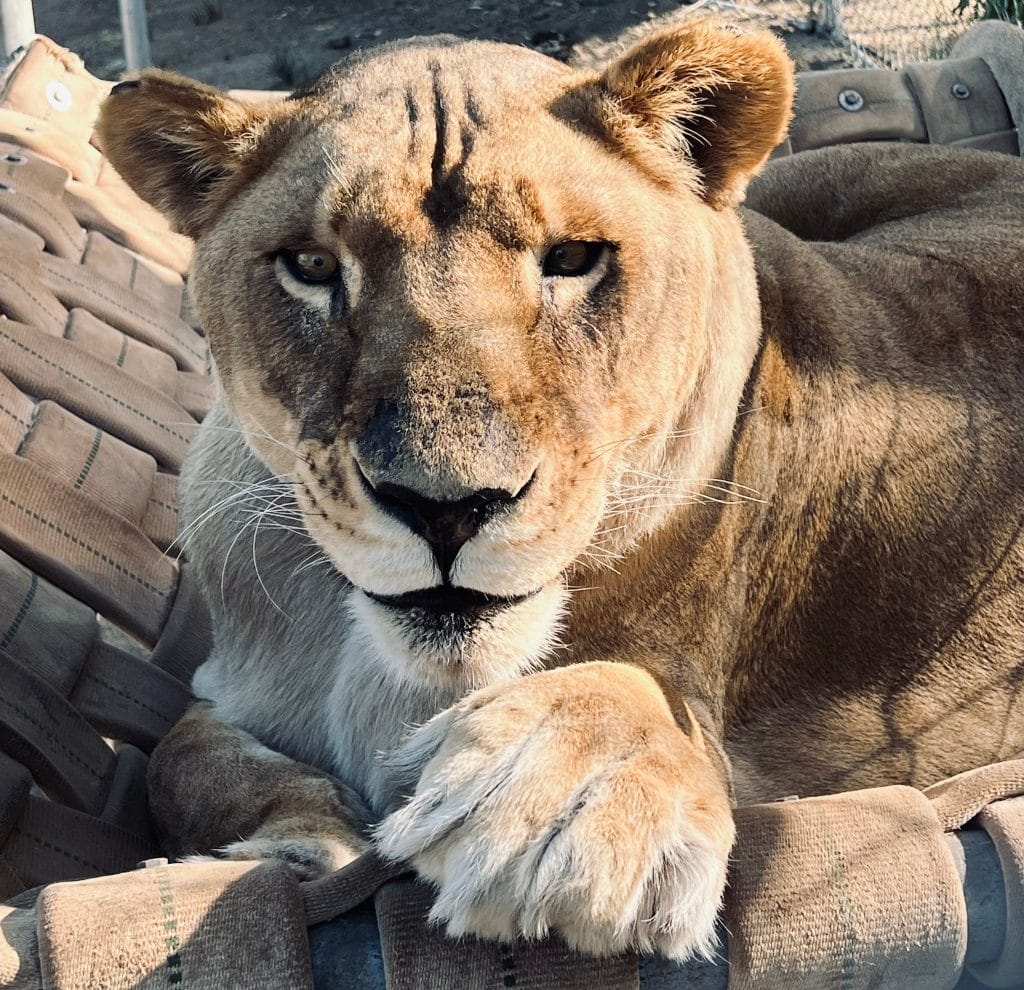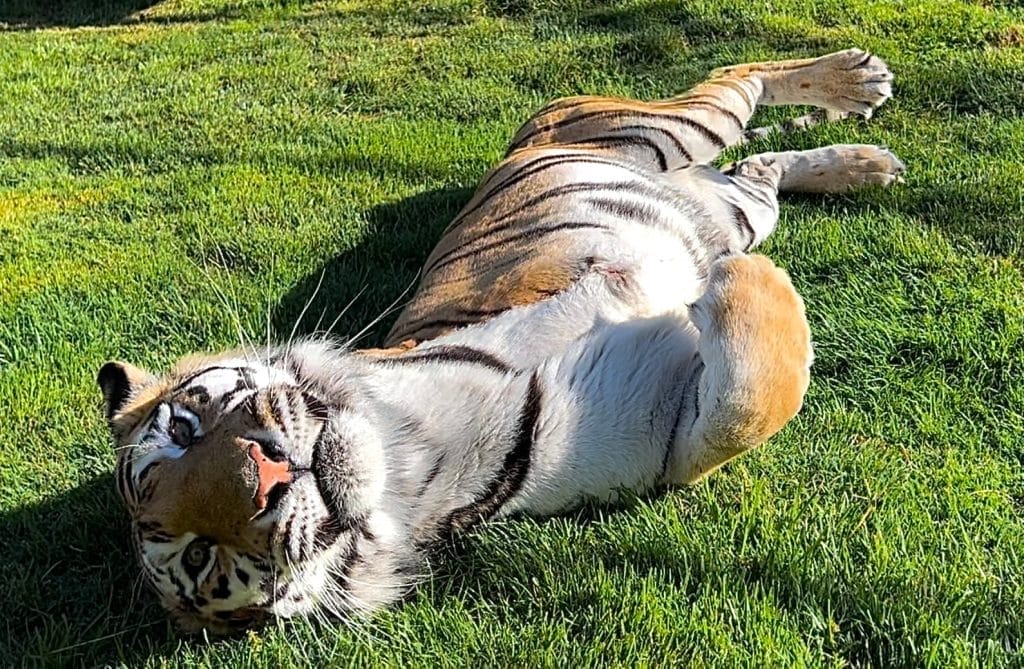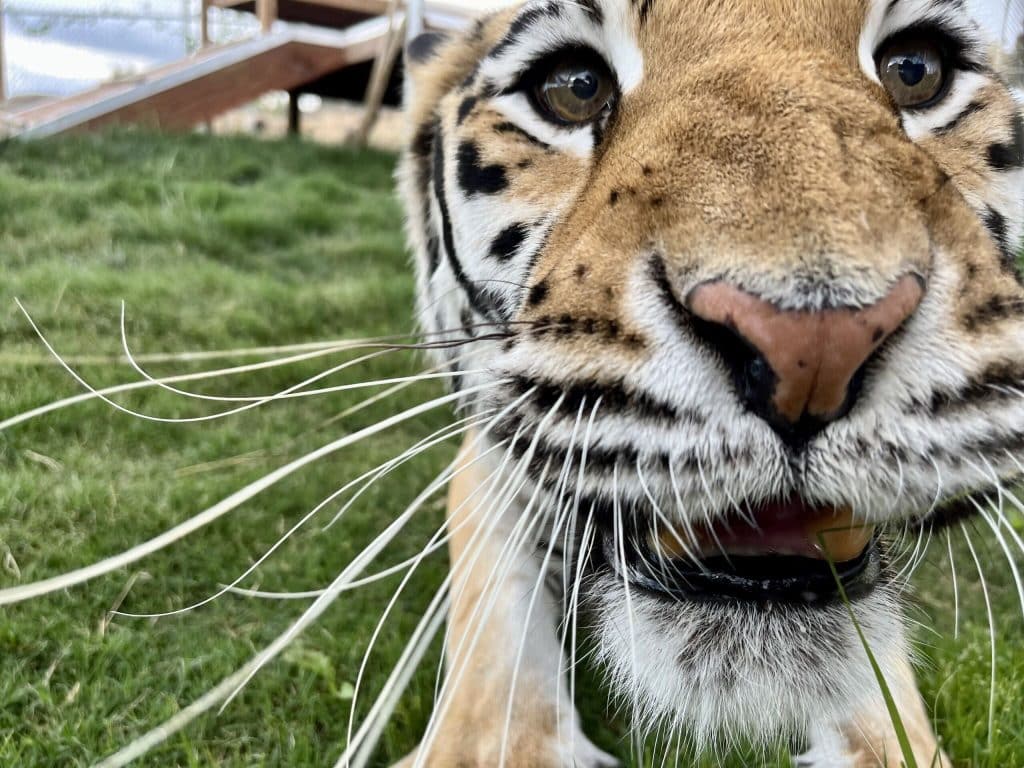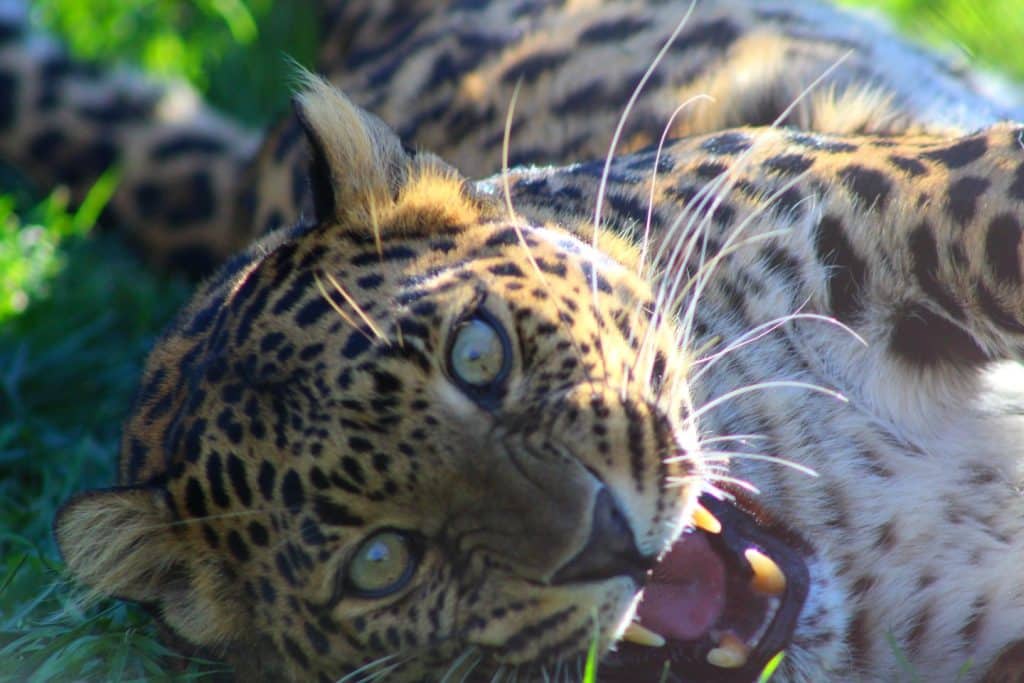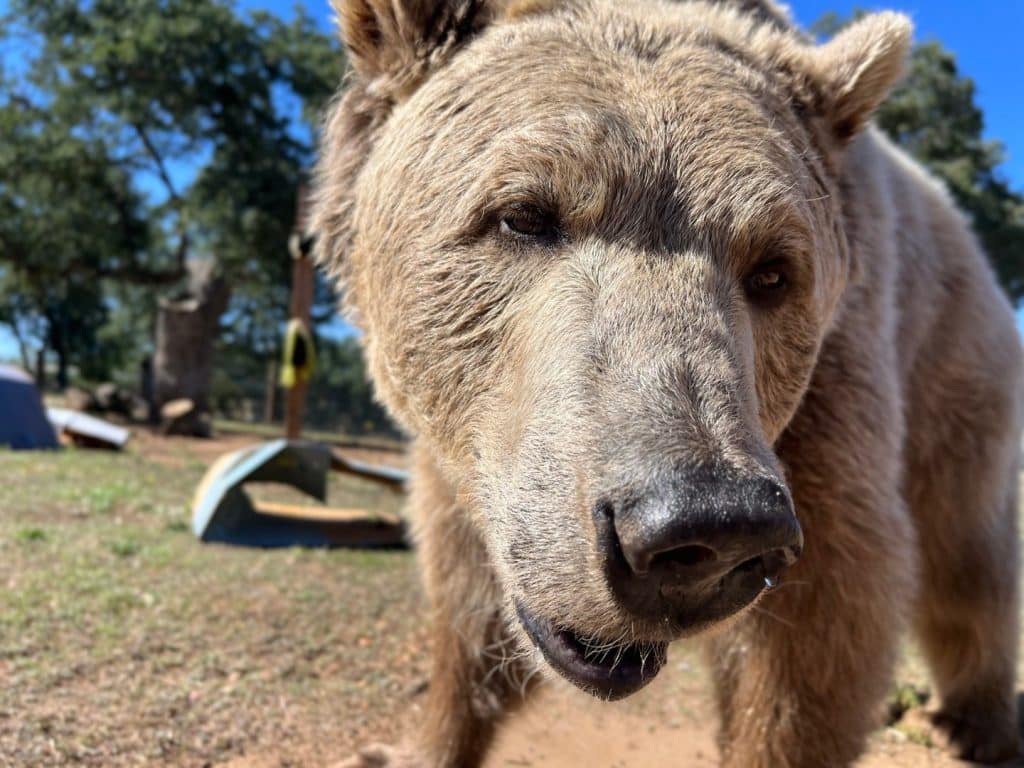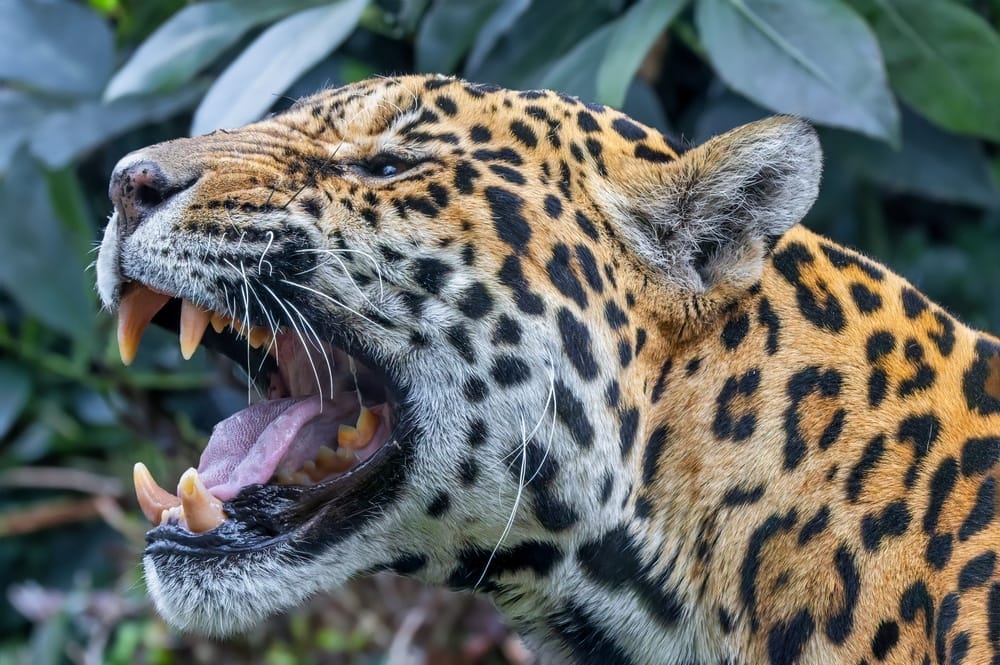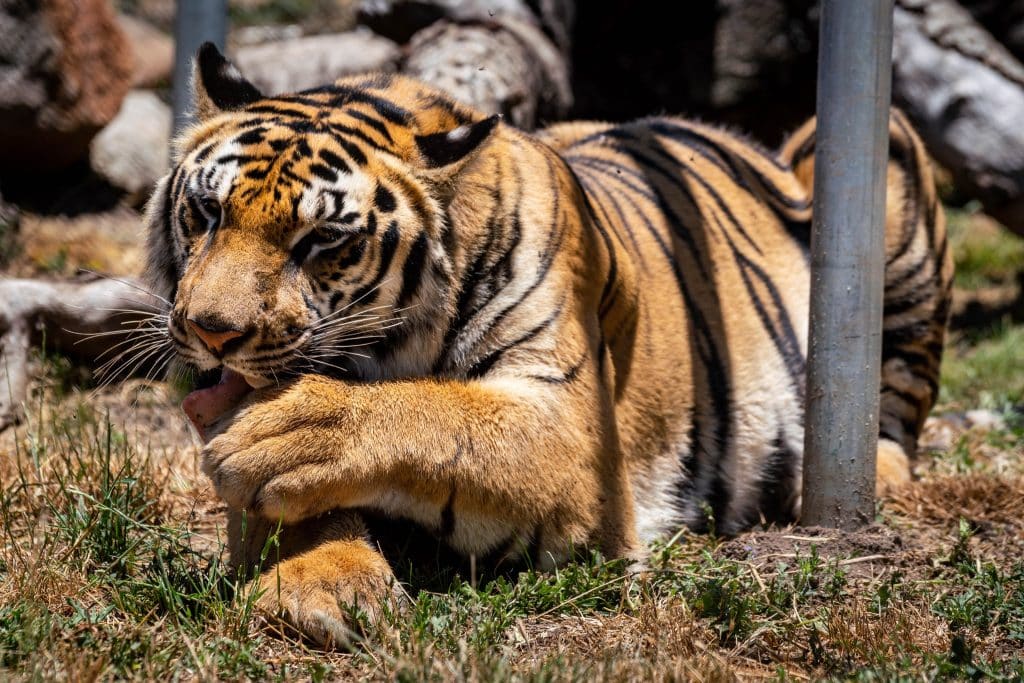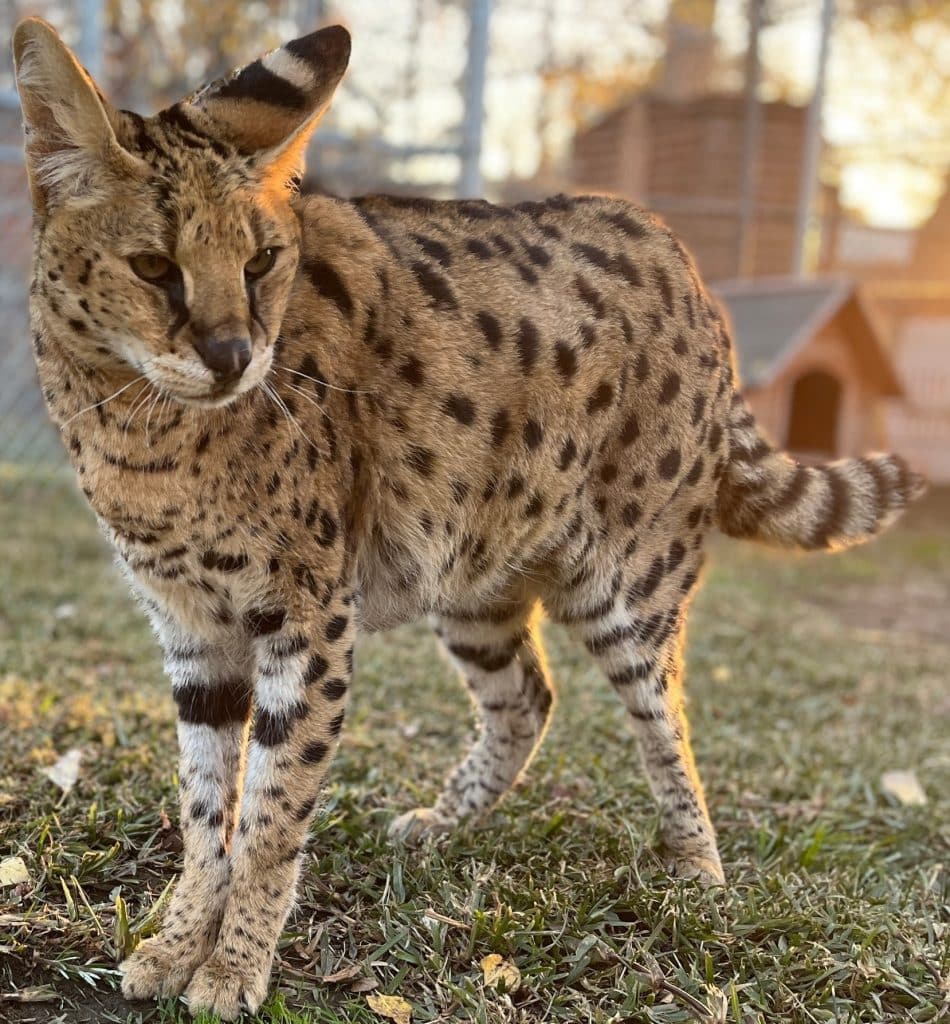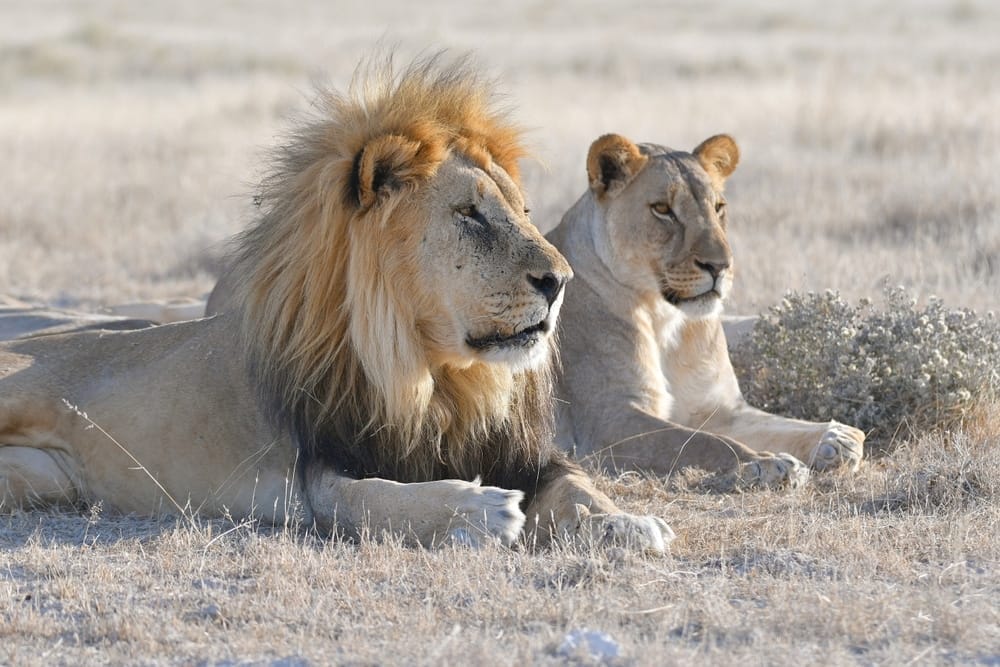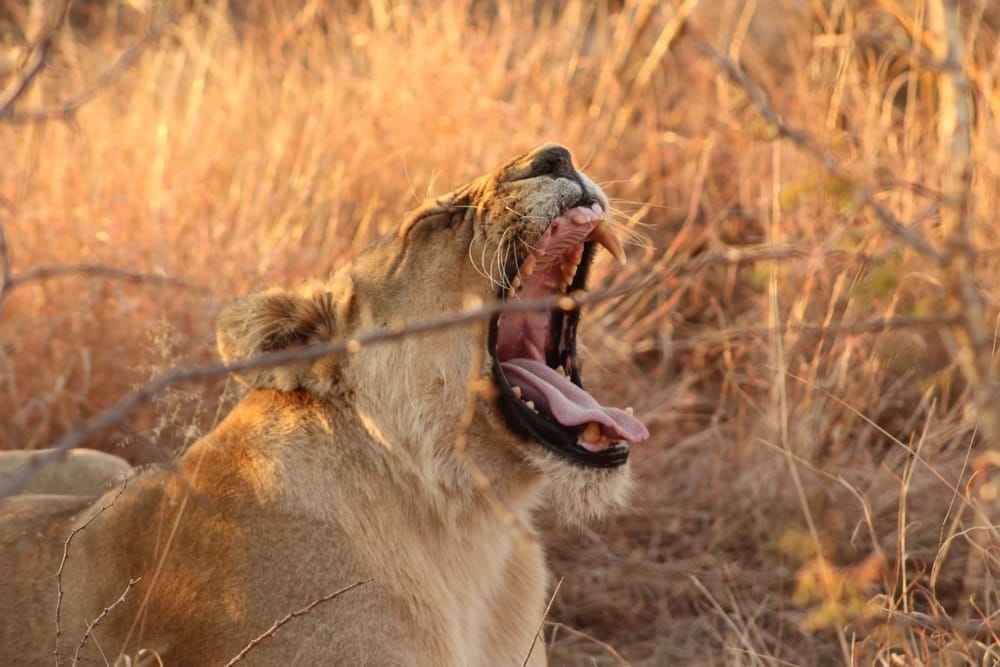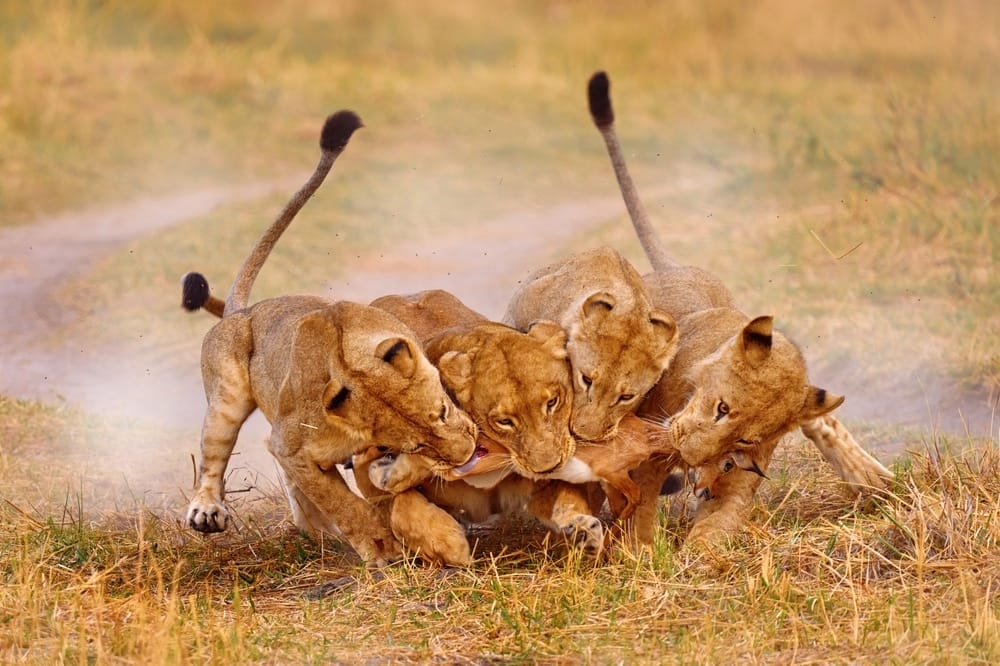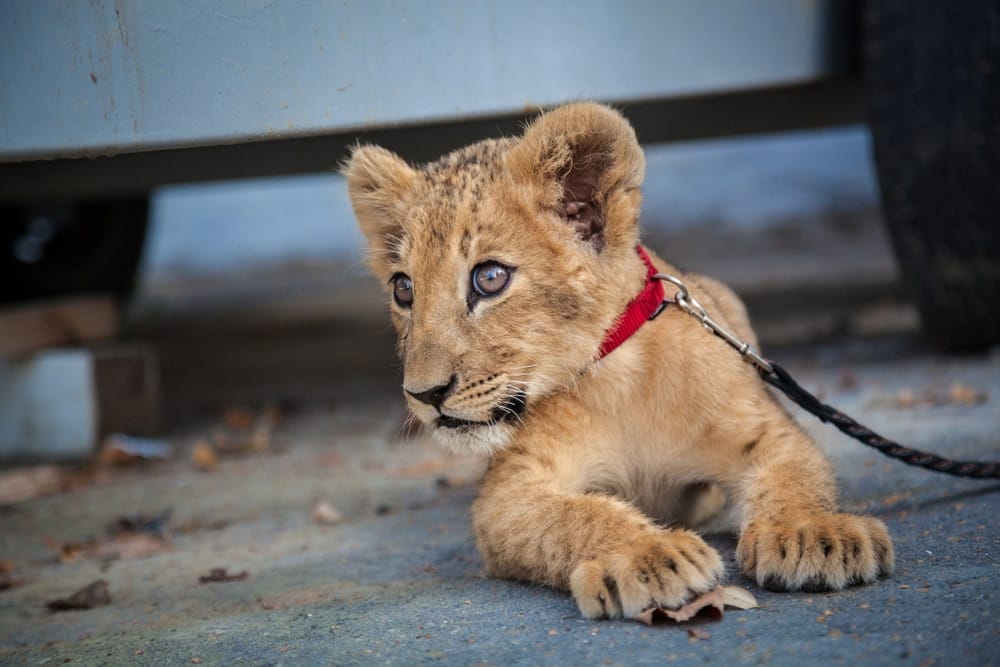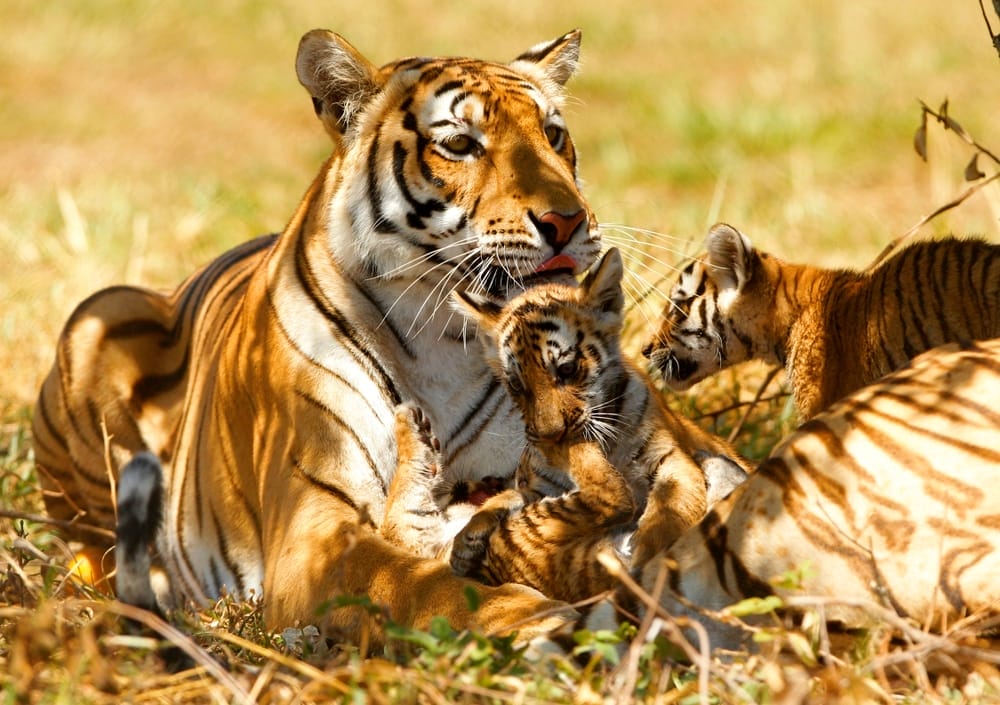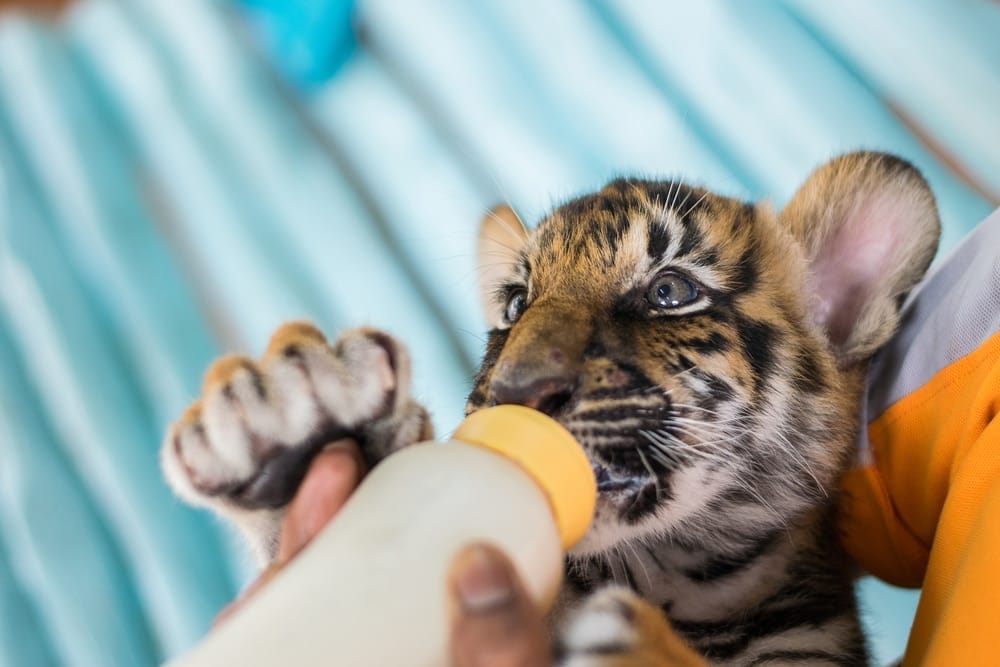What Do Big Cats Eat? The Science of Proper Nutrition for Exotic Animals
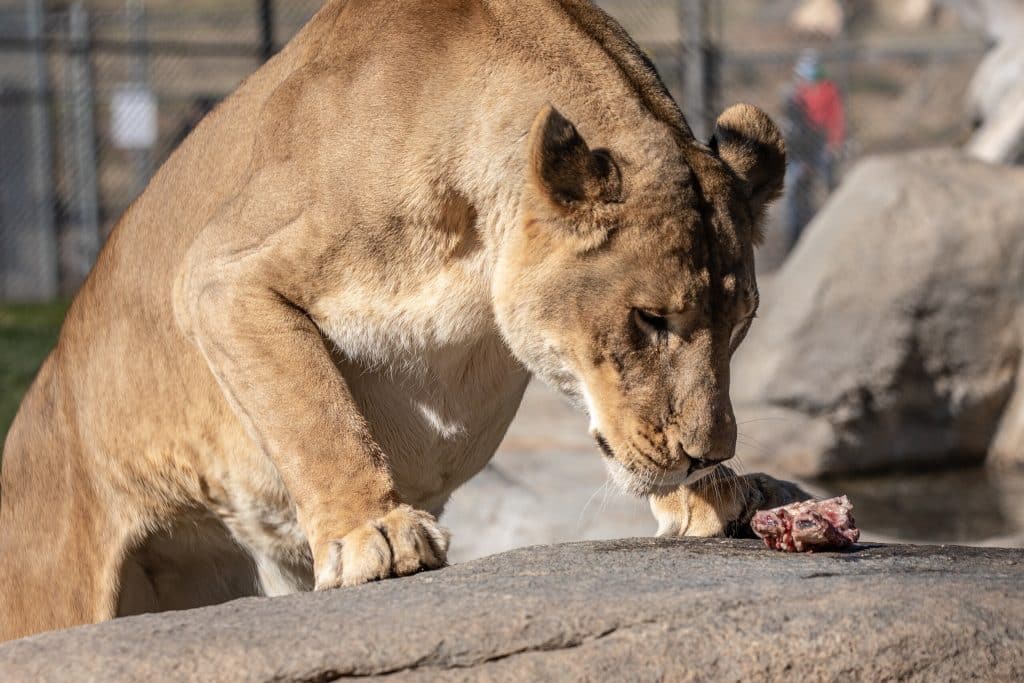
Big cats are famous for their ferocious appetites. But what exactly do big cats eat, and how do their wild cat diets compare to the carefully planned menus they receive at an accredited exotic animal sanctuary, like Lions Tigers & Bears? In this article, we’ll explore the natural hunting habits of lions, tigers, leopards, and even smaller wild cats like servals. Then, we'll see how accredited sanctuaries ensure proper nutrition for these obligate carnivores while in their care.
Wild Hunting Habits
In the wild, all big cats are obligate carnivores, meaning they rely exclusively on meat for sustenance.
Lions
Lions, for example, are apex predators at the top of their food chain and primarily hunt large herbivores such as zebras, wildebeests, and buffalo. A pride of wild lions will work together to take down big prey, with female lions (the main hunters) coordinating ambushes.
After a successful hunt, the male lions often eat first, followed by the lionesses and cubs. Lions can gorge astonishing amounts in one sitting, sometimes over 70 pounds of meat at once. This feast-and-famine pattern suits their lifestyle: a huge protein-rich meal helps lions recover energy and can sustain them for days when hunting isn’t successful.
Tigers
Tigers, on the other hand, are solitary hunters. In their native habitats (from Indian jungles to Siberian forests), wild tigers stalk medium-to-large prey like various species of deer, wild boar, and buffalo. They are powerful enough sometimes to bring down animals larger than themselves.
Unlike lions, a tiger hunts alone using stealth and strength. When a tiger catches a deer or pig, it will eat as much as it can and often drag the rest into cover to save for later. Being solitary, tigers don’t have to share, but they also must do all the work. Tigers have been known to consume up to about 15% of their body weight in a single meal, roughly 40+ pounds for a large male.
Leopards
Leopards have a very different feeding strategy. Leopards are opportunistic carnivores with one of the broadest diets among wild cats. A leopard will eat almost any prey it can catch – over 90 species have been recorded in their diet. In African savannas, mid-sized antelope like impalas and gazelles are favorites, but leopards also hunt monkeys, birds, rodents, and even insects if need be.
We often find leopards dragging their kills high into tree branches, keeping the carcass safe from scavengers like hyenas. Because these cats hunt alone and typically target smaller game than lions, they eat smaller meals more frequently. Their adaptable diet and solitary habits mean leopards can survive in varied environments, from open plains to woodlands.
Servals
Not all wild felines are huge. Servals, medium-sized wild cats from sub-Saharan Africa, illustrate how even smaller wild cats are strict carnivores with specialized diets. Servals are incredible hunters known for leaping high to snag birds and using their oversized ears to pinpoint rodents in the grass. They aren’t picky about prey (though interestingly, servals rarely scavenge), a serval might catch up to 10 frogs in an hour when hunting in wetlands, and over a year, one serval can kill some 4,000 rodents along with hundreds of birds, snakes, and insects.
Most of a serval’s diet are little critters under 7 ounces (200g), so they hunt frequently. This high metabolism, high-protein diet is essential fuel for their active lifestyle. Even though servals are much smaller than lions or tigers, they are still wild cats, which means they need meat, meat, and more meat on the menu.
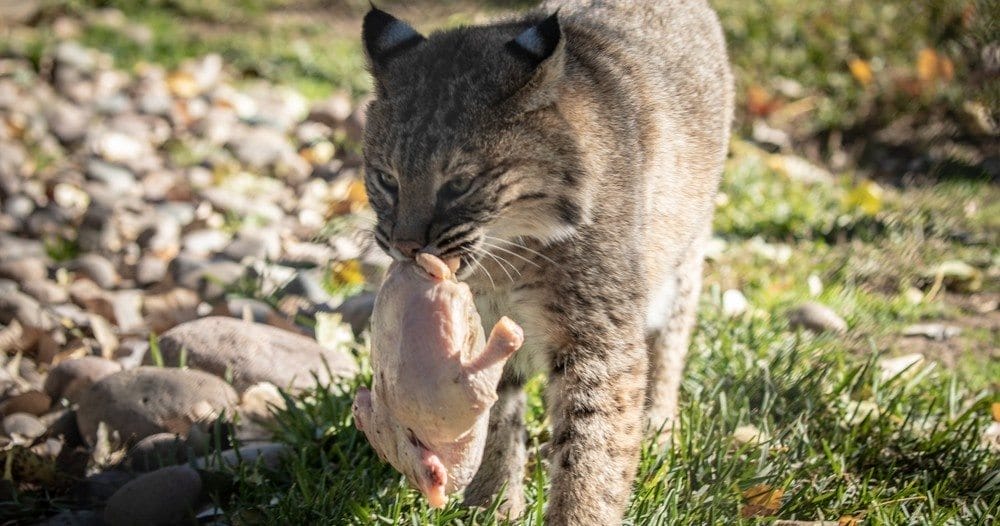
Why Big Cats Need Meat
Big cats are often called obligate carnivores, meaning their bodies are biologically dependent on nutrients found only in animal flesh. Unlike omnivores (or humans, who can choose vegetarian diets), cats must eat meat to survive. Their digestive systems, teeth, and metabolism have all evolved for a meat-based diet. Here are a few key nutritional reasons why cats like lions and tigers can’t give up eating other animals:
- Taurine: An essential amino acid for heart and eye health. Cats cannot synthesize enough taurine on their own, and it is found almost exclusively in animal tissues (especially muscle and organs). Without taurine from meat, a big cat can suffer a variety of ailments, including heart failure or vision loss.
- Vitamin A: Cats can’t convert plant pigments (beta-carotene) into vitamin A, as many omnivores can. Their diet requires preformed vitamin A from animal sources (like liver). A lion munching on a herbivore’s liver is stocking up on vitamin A to stay healthy.
- Arachidonic Acid: This fatty acid cats need for many body functions (like inflammation response), but it only occurs in animal fat. Big cats must consume animal fats to get these necessary fatty acids.
- High Protein Requirement: All felids have a very high protein requirement. Their bodies use protein for energy and vital functions. A cheetah or tiger’s diet might be 45–50% protein by dry weight in the wild. Plant foods can’t supply the quantity or quality of protein a big cat requires.
In short, meat is not optional for these animals, it’s biologically mandatory. Wild felines get a whole prey animal, muscle meat, organs, bones, blood, etc. Each part of the prey supplies different nutrients.
For example, bones are rich in calcium and marrow fat, while organs like the liver provide vitamins A and B. Another interesting fact is that chewing on bones and hide is also necessary. In the wild, big cats crunch through bones and cartilage, which keeps their teeth clean and provides calcium.
Feeding Big Cats in Accredited Sanctuaries

Feeding an African lion or a Bengal tiger in an accredited animal sanctuary is a meticulously planned process. Caretakers must provide a diet that is nutritionally equivalent to what these wild animals would get from hunting. Every species, and every individual animal, has unique needs, so accredited sanctuaries like Lions Tigers & Bears build nutrition plans that mimic the wild as closely as possible. Here's how they do it:
Variety of Raw Meats
At Lions Tigers & Bears, we feed our big cats a carefully selected mix of raw meats to reflect what they would naturally consume in the wild. Beef, chicken, turkey, and other meats are among the staples, each offering different proteins and nutrients that mimic the muscle tissue of natural prey species.
We also incorporate carnivore diets, prepared on-site and fortified with essential vitamins and minerals, to ensure nutritional balance. These help replicate the full dietary profile wild cats would get from eating an animal in its entirety (organs, bones, and all) just as nature intended.
Bone-In Meals for Calcium & Teeth
Remember those bones in a wild cat’s diet? Accredited sanctuaries make sure to include bone-in meat regularly. Big cats may receive large beef knucklebones or cow femurs to chew on several times weekly. This keeps their jaws strong and teeth clean, and provides calcium from gnawing on real bone.
All that chewing is essentially nature’s toothbrush and calcium supplement in one. If a cat can’t handle whole bones (due to age or dental issues), our caretakers will grind the bone or add calcium powder to the food to prevent deficiencies.
Organ Meat and Supplements
Muscle meat alone doesn’t meet a big cat’s nutritional requirements. These obligate carnivores need taurine, vitamin A, B-complex vitamins, and other micronutrients found primarily in organ meats. That’s why sanctuaries regularly include liver, kidney, and heart in their feeding plans.
Many also incorporate a vitamin and mineral premix, essentially a customized multivitamin, to fill any nutritional gaps. At Lions Tigers & Bears, each animal’s diet is fortified based on species, age, and health status to support optimal wellness.
Individualized Portions and Monitoring
Feeding time is also assessment time. Keepers monitor appetite, body condition, and behavior to ensure each cat receives the right food. A 500-pound tiger may eat up to 40kgs of food daily, while a smaller serval needs significantly less.
But it’s not just about size. Medical conditions, activity levels, and age all factor into meal planning. And unlike wild prides, where hierarchy determines feeding order, sanctuary cats are fed individually to guarantee that every animal eats safely and sufficiently.
Food-Based Enrichment

Hunting is as much a mental task as a physical one in the wild. To mirror that experience, accredited sanctuaries use feeding as a form of enrichment. Food might be hidden, hung from trees, or presented in puzzle feeders to encourage climbing, stalking, and problem-solving.
At Lions Tigers & Bears, you might find a lioness scaling a rock wall to retrieve her dinner or a tiger leaping for a meat-stuffed box. These enrichment activities promote natural behaviors, reduce stress, and support their overall emotional health.
At Lions Tigers & Bears, every meal is carefully crafted to meet each resident's unique needs. Our team works closely with veterinarians and nutritionists to ensure our lions, tigers, leopards, servals, and more receive complete, biologically-appropriate meals.
As you can see, caring for wild cats, especially apex predators, comes with real costs. Maintaining a steady supply of high-quality meat, supplements, and enrichment tools for large, carnivorous wild animals costs thousands of dollars monthly. And the truth is, we can’t do it alone.As a big cat rescue that does not receive government funding, we depend on the support of kind-hearted people who believe in giving tiger populations, lions, and other rescued cats a life rooted in dignity and health. If that’s you, we invite you to join us. Donate today and be part of something bigger, because every meal, every pounce, and every rescue and recovery story begins with someone who cares.

